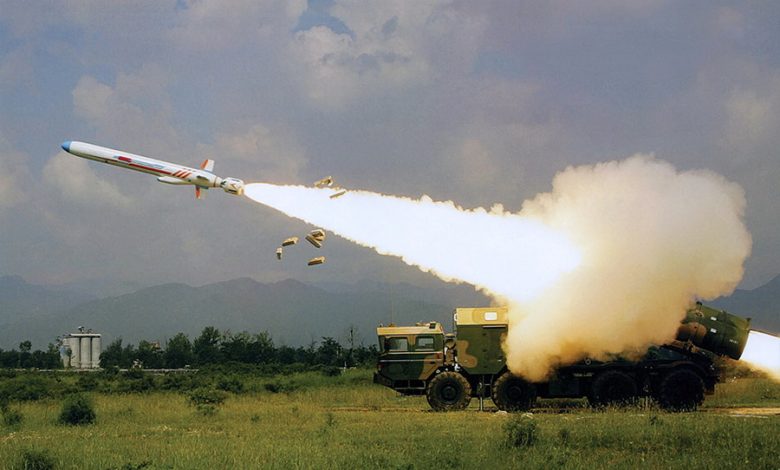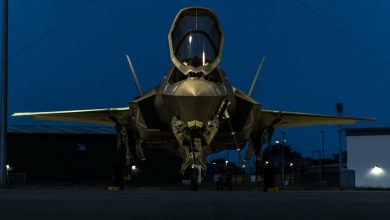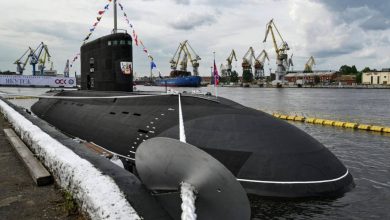Analysis of Chinese cruise missiles: How dangerous is their arsenal?

A look at the YJ-63 Land Attack Cruise Missile (LACM), DH-10 / CJ-10 LACM, YJ-12 Anti-Ship Cruise Missile (ASCM) and additional Chinese missiles
This is the concluding episode in my – and 19FortyFive’s – series on the Chinese People’s Liberation Army’s (PLA’s) missile arsenal. As previously noted, I was inspired to pen this series after attending the Victims of Communism Memorial Foundation’s (VOC)’s annual China Forum in Washington, DC, back on 6 December 2022.
(Subscribe to Our YouTube Channel Here)
In the first three parts of this series, we covered (1) the PLA’s intercontinental ballistic missiles (ICBMs), (2) intermediate-range ballistic missiles (IRBMs) and medium-range ballistic missiles (MRBMs), and (3) close-range ballistic missiles (CRBMs) and short-range ballistic missiles (SRBMs).
Now we’ll discuss China’s cruise missiles:
Definitions/Clarification
A technical differentiation between ballistic missiles and cruise missiles is in order here. For that purpose, a fact sheet provided by the Center for Arms Control and Non-Proliferation is quite useful:
“Ballistic missiles are powered initially by a rocket or series of rockets in stages, but then follow an unpowered trajectory that arches upwards before descending to reach its intended target. Ballistic missiles can carry either nuclear or conventional warheads.”
“Cruise missiles are unmanned vehicles that are propelled by jet engines, much like an airplane. They can be launched from ground, air or sea platforms…Cruise missiles remain within the atmosphere for the duration of their flight and can fly as low as a few meters off the ground. Flying low to the surface of the earth expends more fuel but makes a cruise missile very difficult to detect…Cruise missiles are self-guided and use multiple methods to accurately deliver their payload, including terrain mapping, global positioning systems (GPS) and inertial guidance, which uses motion sensors and gyroscopes to keep the missile on a pre-programmed flight path.”
YJ-63 Land Attack Cruise Missile (LACM)
Introduced in 2004, this is an air-launched, land attack cruise missile LACM that carries a conventional payload – it is not nuclear-capable – of up to 500 kilograms, wields a payload of 20 – 90 kilotons, and has a range of 200 kilometers. It is a single-stage missile that utilizes liquid propellant.
As noted by Kristin Horitski, Van Cleve Fellow at the Missile Defense Advocacy Alliance (MDAA), “The YJ-63 is often deployed on the H-6K bomber, which is designed for long-range and stand-off attacks and has a combat radius of 3,500 km. This puts large portions of the western Pacific within range of the cruise missile and has the potential to be a strong anti-access area denial (A2/AD) capability in the event of a conflict.”
DH-10 / CJ-10 LACM
This subsonic missile has a range of up to 2,000 kilometers with a nuclear or conventional payload of 500 kilograms. Deployed in a single stage and using solid propellant, it is launched from a transporter-erector-launcher (TEL) vehicle that carries three canisters or a ship based platform such as the Luyang III/Type 052D guided missile destroyer. There is also an air-launched variant of the CJ-10 called the CJ-20 which remains somewhat shrouded in mystery but supposedly went operational in 2018.
Of particular concern to the U.S. and her allies in the USINDOPACOM area of responsibility (AOR) is the DH-10’s low flight altitude that increases its stealth capabilities against air defense radars.
YJ-12 Anti-Ship Cruise Missile (ASCM)
This is an air-launched ASCM that is also wielded by the aforementioned H-6K bomber. Initially developed in the 1990s and going fully operational circa 2015, the YJ-12 has a range of 400 kilometers, can reach speeds of up to Mach 3, and can perform midair evasive maneuvers before striking its target.
According to Robert Haddick of War On the Rocks, “the YJ-12 is the most dangerous anti-ship missile China has produced thus far, posing an even greater risk to the U.S. Navy’s surface forces in the Western Pacific than the much-discussed DF-21D anti-ship ballistic missile.”
YJ-18 ASCM
Introduced in 2014, this is a vertically-launched ASCM, launched from the PLA Navy’s aforementioned Luyang III destroyer as well as the Type 055 Renhai-class guided missile destroyer and the Shang, Yuan, and Song-class submarines.
The YJ-18 can attain speeds of up to Mach 3 over a range of 540 kilometers, wielding a 300-kilogram high explosive (HE) warhead with a payload of 100 kilotons that is sufficient to totally trash a destroyer-sized warship and severely damage a carrier-sized vessel.
This missile’s ability to accelerate to supersonic speeds in close proximity to its target makes it difficult for ships to destroy the incoming missile with on-board guns such as the Phalanx Close-In Weapons System (CIWS). To make matters worse, it also increases the stand-off distance for Chinese vessels and contributes to their anti-access area denial (A2/AD) capabilities.
Acknowledgements
Major kudos to Riki Ellison and his excellent staff at MDAA, whose writings proved to be invaluable sources of information for this entire four-part series. Fight On, Riki and MDAA crew!





